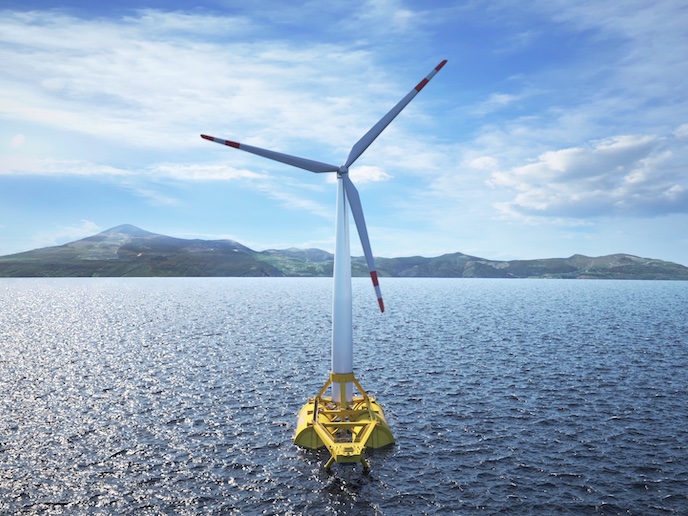Staying afloat with offshore wind energy
With stronger ocean winds and more uniform wind flows than on land, offshore wind farms can produce far more energy more reliably than onshore farms. But offshore installations have been limited by current technology to shallower waters. The solution is floating wind turbines. Currently, 90 % of global installed offshore wind capacity is commissioned and operated in the North Sea and the nearby Atlantic given the shallow depths and good wind reserves. “But the combination of those two conditions is not common around the world, so with greater sea depth you need floating offshore wind,” says SATH(opens in new window) project coordinator David Carrascosa, operations director at Saitec Offshore Technologies, Spain. Many countries such as Ireland, Spain, Norway, Japan and the United States (west coast) have only a narrow shallow continental shelf(opens in new window) before sea depths drop to more than 50-60 metres – the technical limit for fixed-bottom offshore structures, remarks Carrascosa. The solution seems obvious, but floating wind energy technology was not well developed because of the high initial cost of research. “Now we are seeing greater ambition from governments, policymakers and the private sector, and we have a vision for reducing the cost of floating offshore wind very quickly, reaching the levels of current fixed-bottom offshore wind probably by 2030-2035,” Carrascosa notes. “Offshore wind is quickly becoming competitive with other means of electricity production, with energy prices below nuclear or gas.”
Scaling up to full-scale demonstrators
After wave tank testing, the project moved from 1:60 to 1:36 scale models around 2 m tall. “Now we are manufacturing a real-scale demonstration platform moving from a 30 KW device to 2 MW – from an 18 m tall device to a 70 m tall platform,” Carrascosa explains. Each stage required hydrodynamic analyses and refinements of the software tools that were developed. The biggest challenge was moving from small projects in a controlled environment to a full-scale installation. “We had to learn a lot about procurement, management and the interfaces between suppliers, and we had to face COVID-19 as well,” he adds. COVID-19 delayed the timing, so the 18 m demonstrator model ended up being tested in stormier autumnal waters than originally envisaged. This turned out to be a blessing in disguise. “Now we are designing the floating platform for year-round use and to be installed in the Cantabrian Sea, an exposed location with harsher conditions than in the North Sea,” says Carrascosa. “We had to design for a maximum wave height of 19 m.”
Logistics of offshore floating turbines
Large turbines cannot be easily transported on land, but seagoing vessels can accommodate bigger turbines and bring them to offshore locations. “We are now designing a filter for turbines that will soon reach 20 MW, which is huge,” he notes. The floating platforms are anchored to the seabed with chains or fibre-rope moorings which allow the platform to rotate, always facing the wind. A cable connects the platform to the onshore substation(opens in new window). “Depending how far the installation is from the shore, it might need a fixed-bottom intermediate substation offshore, or a floating substation offshore which connects to the electrical grid onshore,” Carrascosa explains. The area occupied by offshore windfarms is small compared to the vast oceans, and while shipping routes have to be taken into consideration, “it is clear we can all live together,” adds Carrascosa. The project included research on maritime transport patterns and commercial fishing activity, as well as the environmental impact of floating platforms on marine mammals, fish and reserved environmental areas.







